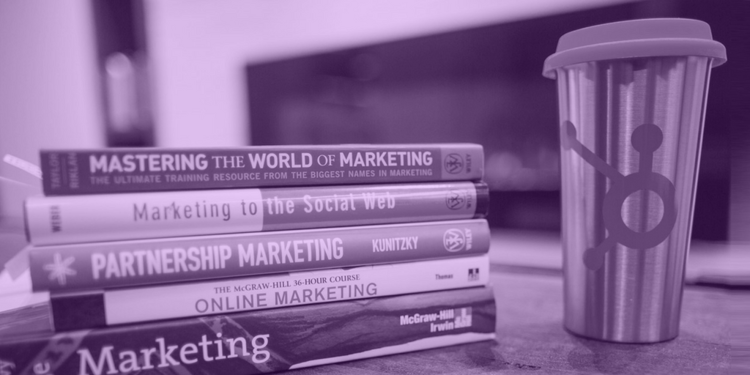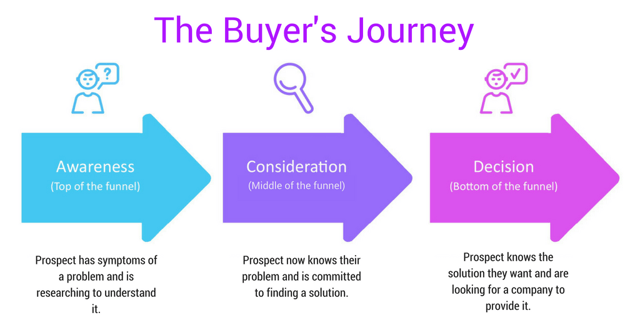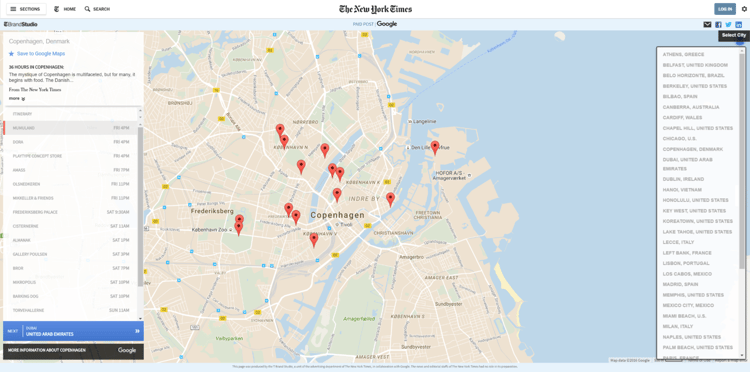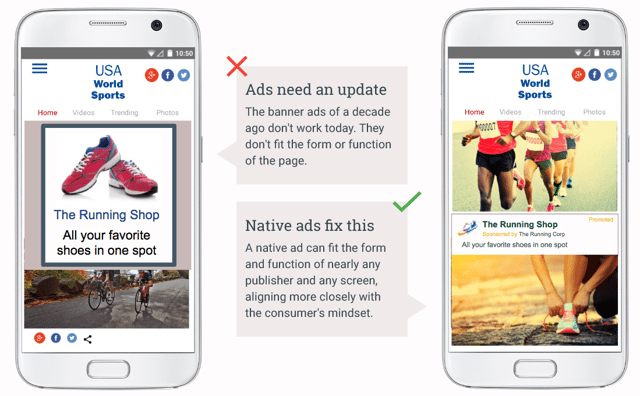Incorporating Native Marketing Into Your Inbound Strategy
A wholly effective inbound strategy should utilise PPC and SEO, as well as content sharing and email nurturing. Incorporating native marketing into your inbound strategy is a great way of attracting new visitors in a helpful, non-intrusive and inbound friendly way.

Quick Recap: What Is Inbound?
Inbound marketing is the method of marketing which focuses on being there to provide helpful answers and advice to today's consumers (or business customers) in order to earn their trust and encourage them into using you to solve their problem.
It is the logical response to the fact that today's consumers and business customers start by conducting online research in order to solve problems, find products and choose service providers. All ages and types of internet users do this.
If you pursue inbound marketing, you will be able to make contact with these internet users and nurture them into becoming a customer. You will be making sure you are able to make contact with them at the Awareness stage of the journey every buyer goes through.

You can read a more comprehensive explanation here.
Quick Recap: What Is Native Marketing?
Native marketing is more towards traditional outbound advertising (paid ad space) but is purposely aimed to be complementary to what the viewer is already doing. The first example in the internet age was sidebar ads in search engine result pages. It's now evolved into advertorials, social targeting and remarketing techniques.
A simple example, to explain the principle: if you were browsing a popular running and fitness website, somebody like New Balance might pay to place their ad on there or even pay to put a paid article on there.
This is commonly referred to as an advertorial, but native ads can be placed in a more traditional sense in social media streams, on banners and pop-ups. The idea is that you can pay to reach another's audience who might find you/your content/your services useful to their interests.
A good example, that I love, is Google Travel's paid advertorial content, which is a trip planner, on The New York Times website.

The Google Travel advertorial tool in action. You can randomly choose a city and Google Maps works with the New York Times city reviews to plan a weekend trip for you, complete with reviews and tips.
What Are The Benefits Of Native Marketing?
The benefits in relation to the inbound methodology are two fold. First, you are able to harness the power of reaching a wider audience and piggy-back onto the trust and authority of whoever hosts your native ad. In the example above, readers of The New York Times travel section are clearly interested in travel and in a position of trusting a reputably name like the NYT. Google are tapping into this by paying to put this advertorial tool on that site, where it appears just like another post - apart from the small note that "This is a post paid for by Google Travel".
Second, when users are reached in this way, it makes them more likely to pay attention to your content - because it is highly relevant and put in front of them by somebody they already trust. It's also relating to the topic they already have in mind. Perfect for building trust between you.
The New York Times uses DoubleClick by Google to optimise their native ads and saw a 6x increase in clicks and 4x more viewable impressions.
Good Practice For Native Marketing Is The Same As Inbound
Native ads need to be relevant and helpful. Just like marketers who work in an inbound way need to be. They should match their surroundings in terms of appearance, style and topic.
As we see more and more people use ad blocking software, and user habits and tastes adapt generally, interruptive pop-ups and banner ads are becoming more and more ineffective. It's important that your native ads follow best practice.
If you use them as part of your inbound strategy too, they can directly lead to more visitors and contacts for yourself, who you can then nurture into becoming leads and conversions. The underpinning link is the fact that you haven't interrupted them with an irrelevant ad (which 99% of people will ignore) and you've also presented it in a format and setting which is helpful and pleasing.
That's great inbound marketing.

An example from Thing With Google of what makes a good native ad.
How To Incorporate Marketing Into Your Inbound Strategy
It starts by paying the right publishers and hosts. You need to avoid direct competitors but need other sites and social platforms where your target personas hang out online. Blogs, review sites, forums, social platforms can all be researched and targeted.
Make sure that the CTAs and content that you push in your native campaigns are complementary to your own inbound content so that everything seamlessly ties together.
You can target the following:
- Paid advertorials
- Paid ads on social
- Highly focused remarketing lists
- Display ads
It is also worth noting that this is different to guest posts and paid post promotions.
Also, you cannot just pay to put your inbound content onto other sites as this will create duplicate content and incur a penalty from the search engines. This should take place in addition to your inbound campaign.
But it is most effective when it leads into your inbound content, via CTAs and links. The key benefit and what you should concentrate on when it comes to native content is the fact that you are producing content in the normal inbound way, but you are paying to put it in front of a specific audience who has come onto a site they trust for a slightly different purpose.
This leaves them thinking something like, "Well I came on this New York Times travel site for something interesting to read about Rome on my lunch. Go on then, I'll play on this tool that Google have paid to put here." And then you'd be very likely to head to the Google Travel site itself and make some bookings.
Hopefully this illustrates the potential of a well thought out native marketing strategy and how it can boost your inbound marketing efforts.
Get More Tips And Tricks
We have put another 30 ideas like this into one easy reference eBook. Our guide to getting more from your inbound marketing is free and available to download now when you press the button below.
Real Growth. Real Impact.
HubSpot for startups: Leveraging the platform and unlocking growth w. Ragini Campion
Making AI adoption not a big deal with Mike Kaput from The AI Show
HubSpot's Spring Spotlight 2025 was not what we expected
The Power of Community in Marketing
The Return of Human Marketing in an Automated Age | Avidly Talks
How to make change projects a success - Change management tactics
How to prompt AI for great creative ideas
See why enterprises choose Avidly
Let’s build your HubSpot success story
Compelling final call to action - with accompanying link to Contact page







